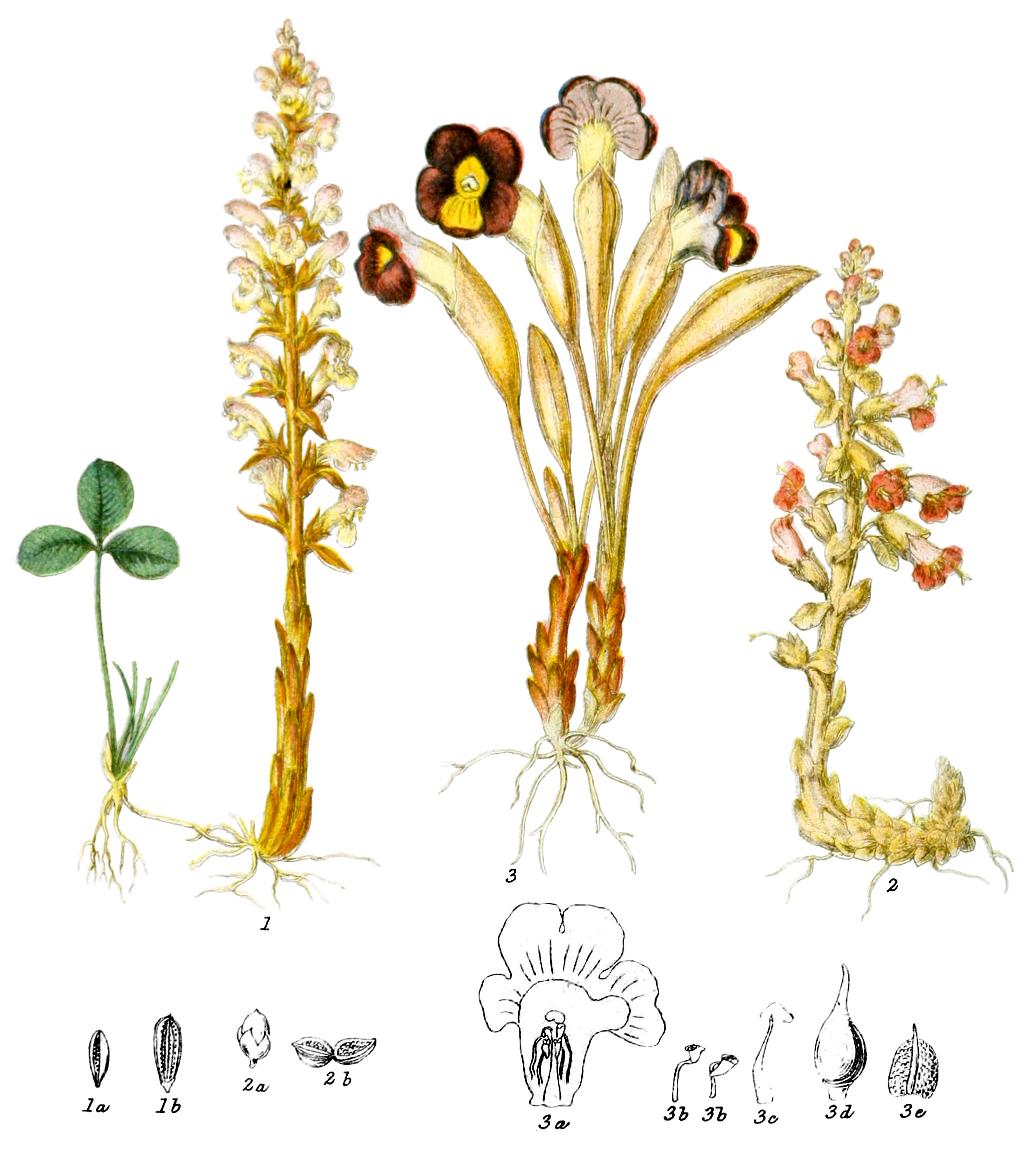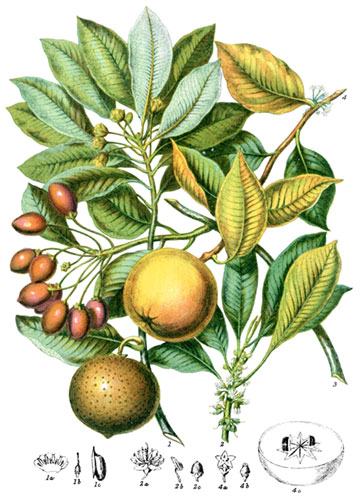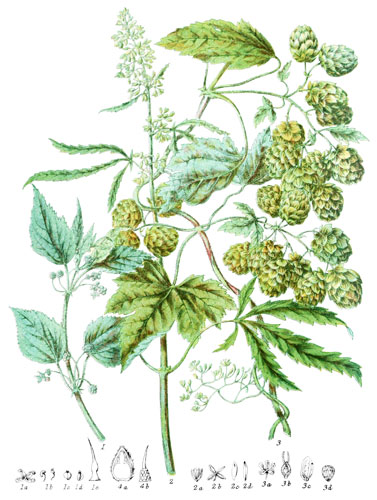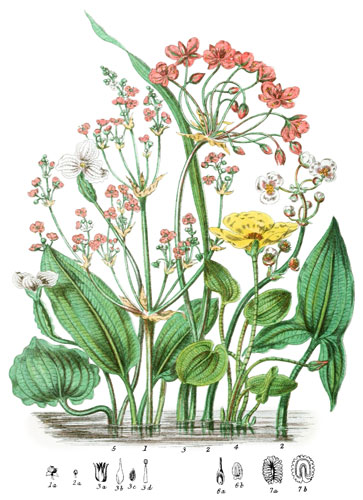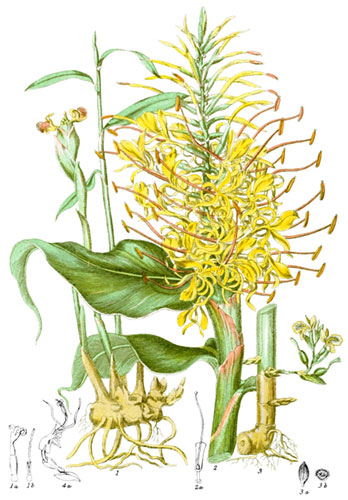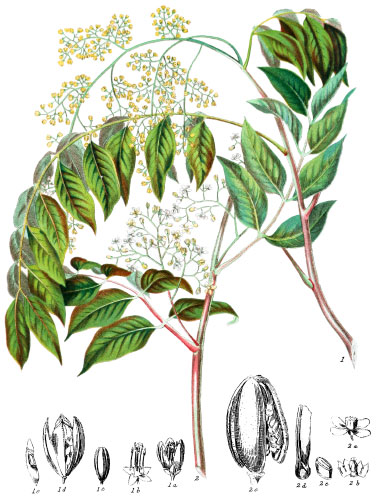Key characteristics
Herbaceous plants, growing parisitically on the roots of other plants. The stems are without leaves, covered with brown scales. The calyx is below the ovary, divided persistent. The corolla is one of one petal, attached below the ovary, irregular in form, folded over in the bud. The stamens are four, two of them larger than the others; the anthers are generally two-celled, occasionally one-celled, the cells are distinct, often hooked at the top bearded at the base. The ovary is above the calyx, one-celled, placed on a fleshy disk. The style is single, the stigma two-lobed. The seed-vessel is a capsule, enclosed within the withered corolla one-celled, two-valved, each valv having one or two plates along the middle, bearing seeds. The seeds are indefinite number, minute, and contain fleshy albumen.
This Tribe has affinity with Fig-worts, in the two long and two short stamens, but is known by the one-celled capsule, and parasitic habit of growth.
Astringent and acrid properties exist in these plants.
Select plants in this order
Not all plants listed are illustrated and not all plants illustrated are listed.
- Orobanche is said to have been named from the Greek, in allusion to its habit of attaching itself to, and strangling the Orobus and other plants of the Vetch or leguminous kind. Some parasides do not molest the tree or herb on which they grow, but the Orobanche is often very injurious, and by fixing on the roots, draws away the valuable nourishment from the plant.
- The Genevese botanist Vaucher, observed that the seeds of O. racemosa will lie many years in the ground unless they chance to come in contact with Hemp, when they immediately begin to germinate. He found, moreover that they can only grow on young plants, being unable to attack and penetrate stronger roots.
- O. minor (1) is a small species, but very hurtful when abundant in a clover field, as it often is in Norfolk and Essex. Unless the earth be carefully removed from about the plants, it would not be suspected to have any connexion with the clover, as it is only at the points of the roots that they grow together; where it has once taken possession of a field the crop becomes too scanty to be of any value.
- O. major is a stouter darker plant, chiefly attached to Broom or Furze.
- O. elatior is of brighter hue, and parasitic on clover; these three species grow on a gravel soil; O. rubra on basaltic rocks in Scotland and Ireland, at Staffa, and in the Giant’s Causeway: this is probably not parasitic, for few other plants vegetate on the thin layer of earth which covers the rocks.
- O. fætida of a red brown hue in the whole plant is a native of Portugal.
- A Russian species, O. ammophila, bears blue flowers on its brown stem.
- Some of thes eplants are said to have astringent properties; O. epithymum yields a bitter tonic, used in some countries medicinally; the flowers are slightly fragrant.
- Orobanche is more plentiful on the Continent than in Britain, twenty-four species being found in the Flora of Gemany.
- Another nearly similar genus, of dull aspect is the Lathræea (2);* growing chiefly in the shade of woods; it is devoid of bright colour in the flowers, and the leaves are of a pale brown. The manner of growth in some degree resmebles that of ferns, the fibrous roots proceeding from an underground portion of the stem, which remains horizontal before rising upwards. This is one of our British plants which finds a suitable temperature in the upper regions of the Himalayas.
- Æginetia pedunculata (3) is a more brilliant example of this tribe than any British species; the form and colour of the flower remind forcibly of the Gesnera tribe, and seem to indicate an affinity which does in fact exist between the two tribes, although they differ in some important parts of structure.
- Æginetia pedunculata grows on the roots of tall grasses in Bengal, frequently also on various kinds of Bamboo, springing up, blossoming, and producing seed during the rainy season. Whilst in flower it is singularly beautiful: the whole plant is of a soft fragile texture, slightly scented like mushrooms. The root is fleshy and grey; the hollow sheath-like calyx contains in its base a clear liquid; the capsule is the size of a hazel-nut, and is filled with numerous minute dark-brown seeds.
- Æ. indica grows in the valleys of the Himalaya, and is used medicinally by the natives.
- Epiphegus virginiana is known as a medicine in North America.
- Phelipea, or Cistanche lutea, is employed as a black dye for the ropes made from the fibres of the Doom Palm of Thebes: it is a native also of Portugal, bearing several large yellow flowers on its brown scaly stem.
- P. lanuginosa of Altai Mountains is blue.
Locations
This Tribe is common in Europe, particularly in the southern countries; it is found also in Africa, at the Cape of Good Hope, and in Barbary; it exists, though rarely, in Central and Northern India, and in North America.
Legend
- Orobanche minor, Lesser Broom-rape. England.
- Seed-vessel, open.
- Section of Seed-vessel.
- Lathrea* squamaria, Tooth-wort. England.
- Seed-vessel.
- Seed-vessel, opened.
- Æginetia pedunculata, Stalked Æginetia. East Indies.
- Flower, opened.
- Stamens.
- Pistil.
- Ovary.
- *Lathræa was spelled “Lathrea” in the description.
- †3e was not named in the original description.
Explore more
Posters
Decorate your walls with colorful detailed posters based on Elizabeth Twining’s beautiful two-volume set from 1868.
Puzzles
Challenge yourself or someone else to assemble a puzzle of all 160 botanical illustrations.
